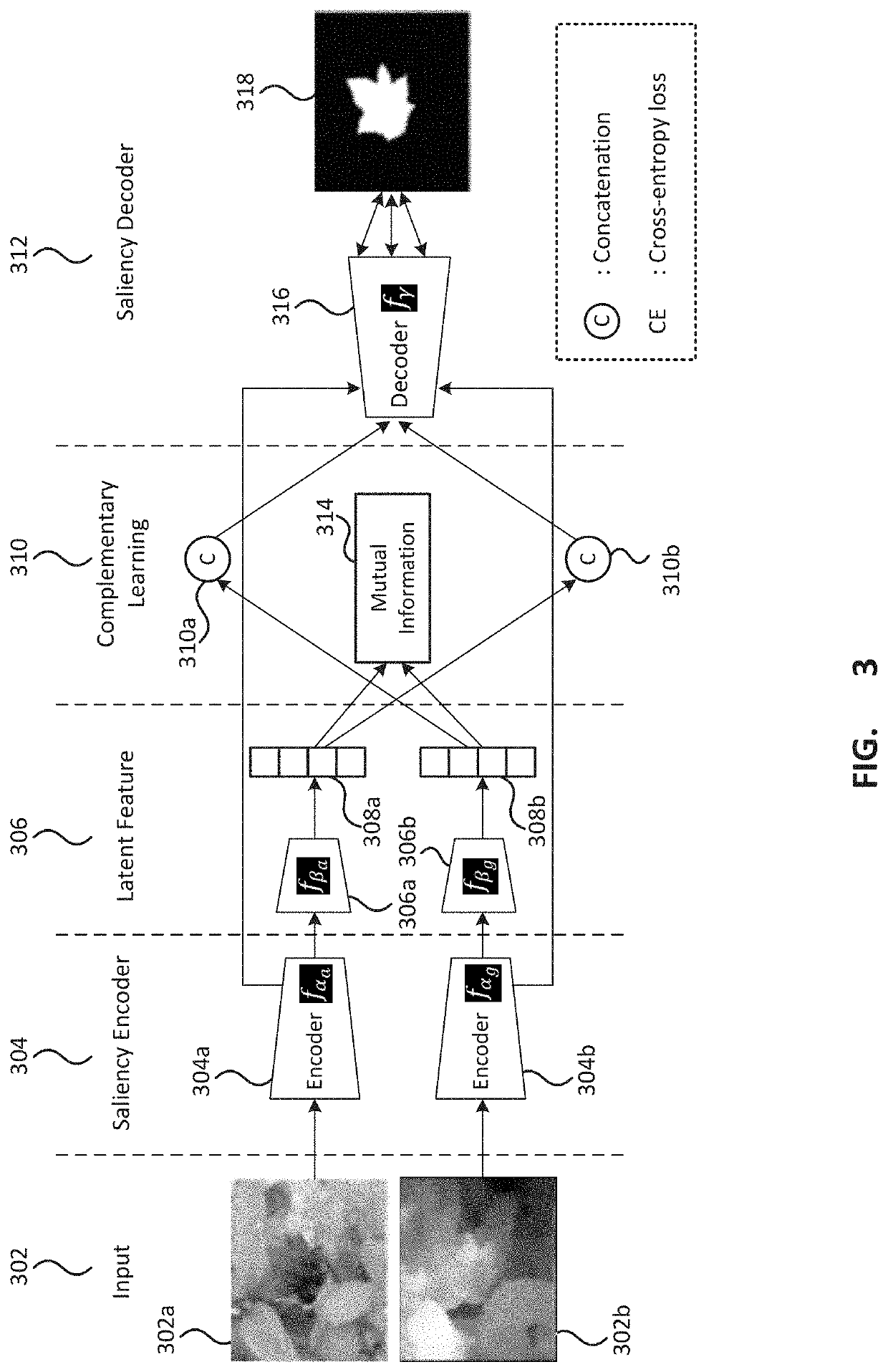Complementary learning for multi-modal saliency detection
a multi-modal saliency detection and complementary learning technology, applied in the field of saliency detection on images, can solve the problem that no state-of-the-art (sota) method models the procedure of complementary learning explicitly
- Summary
- Abstract
- Description
- Claims
- Application Information
AI Technical Summary
Benefits of technology
Problems solved by technology
Method used
Image
Examples
Embodiment Construction
[0036]A complementary learning based RGB-D saliency detection framework (CLNet) that explicitly models complementary information between RGB images and depth data is described further below. By minimizing the mutual information between these two modalities during training, the current model focuses on the complementary information rather than the mutual information. In this fashion, CLNet is able to exploit the multi-modal information more effectively.
[0037]Images that include both appearance and depth information, it is possible to use both the appearance and depth information in the saliency detection. The appearance information may comprise, for example color information such as RGB data or other types of color information. The depth information provides information on the depth or distance from the camera of each location in the image and may be represented in various ways, including for example as a grey scale image. The depth information may also be considered as describing th...
PUM
 Login to View More
Login to View More Abstract
Description
Claims
Application Information
 Login to View More
Login to View More - R&D
- Intellectual Property
- Life Sciences
- Materials
- Tech Scout
- Unparalleled Data Quality
- Higher Quality Content
- 60% Fewer Hallucinations
Browse by: Latest US Patents, China's latest patents, Technical Efficacy Thesaurus, Application Domain, Technology Topic, Popular Technical Reports.
© 2025 PatSnap. All rights reserved.Legal|Privacy policy|Modern Slavery Act Transparency Statement|Sitemap|About US| Contact US: help@patsnap.com



